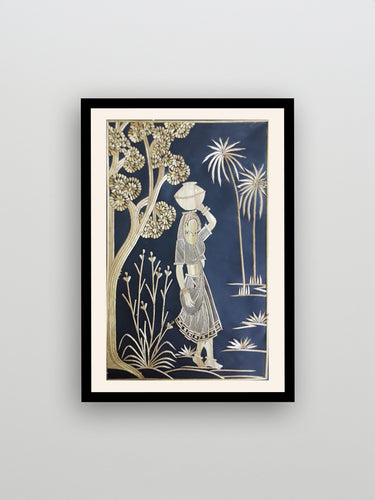Sikki grass craft is a traditional art form indigenous to Mithila, Bihar, known for its intricate designs and eco-friendly nature. This centuries-old craft has a rich history, rooted in tradition and folklore, making it a significant part of India's cultural heritage. This beautiful handicraft has also been recognized as a Geographical Indication (GI) product by the Government of India that preserves and promotes the traditional knowledge and skills of the region.
History and Tradition
The tradition of Sikki grass craft can be traced back to the Vedic period, with references found in Hindu mythology and folklore. According to the legend, goddess Sita used Sikki grass to weave beautiful mats and baskets during her exile in the forest. Inspired by her craftsmanship, the local communities began experimenting with Sikki grass, eventually developing it into a refined art form.
Methods and Style
Sikki grass, also known as golden grass or Sarkanda, is harvested during the monsoon season. The stems are split into fine strands and then dried for 20-25 days under the sun to give their signature golden hues. Craftsmen often dye it using natural colors like purple, green, yellow, or magenta. It is then woven into various shapes and designs.
Sikki grass craft involves intricate weaving techniques passed down through generations. Skilled artisans meticulously weave the dried grass stems to create a wide range of products, including decorative items, household utilities, jewelry, and toys. Only a small metal tool known as ‘Takua’ is used in this handicraft. The craft is characterized by its simplicity, yet intricate designs, often featuring motifs inspired by nature, mythology, and daily life. The final products are often decorated with colorful threads, beads, and mirrors. This ancient craft not only preserves cultural traditions but also provides a livelihood for countless artisans across Bihar.
FAQs
Can Sikki grass art be customized?
Yes, many artisans offer customization options for Sikki grass products. You can request specific colors, designs, or shapes to suit your preferences. Customized Sikki grass items can make for unique and personalized gifts or home decor pieces.
Is Sikki grass art environmentally friendly?
Yes, Sikki grass art is an eco-friendly craft. The use of natural, biodegradable materials like Sikki grass, along with traditional dyeing methods, makes this art form sustainable and environmentally conscious.
Is Sikki grass art a declining craft?
While Sikki grass art remains an important cultural tradition, it has faced challenges due to modernization and a decline in the number of artisans practicing the craft. However, efforts by cultural organizations and increased market demand are helping to revive and sustain this unique art form.
How can I support Sikki grass artisans?
You can support Sikki grass artisans by purchasing their products, promoting awareness of the craft, and encouraging others to appreciate and buy traditional handmade goods. Supporting fair-trade initiatives and artisan cooperatives also helps sustain the livelihoods of these skilled craftsmen.
Are Sikki grass products durable?
Yes, Sikki grass products are quite durable when properly cared for. The natural strength of the grass, combined with the skillful weaving techniques used by artisans, ensures that these items can last for many years with minimal maintenance.
Show Less
